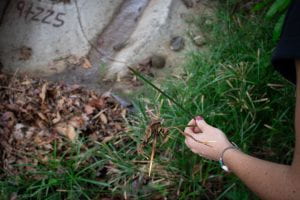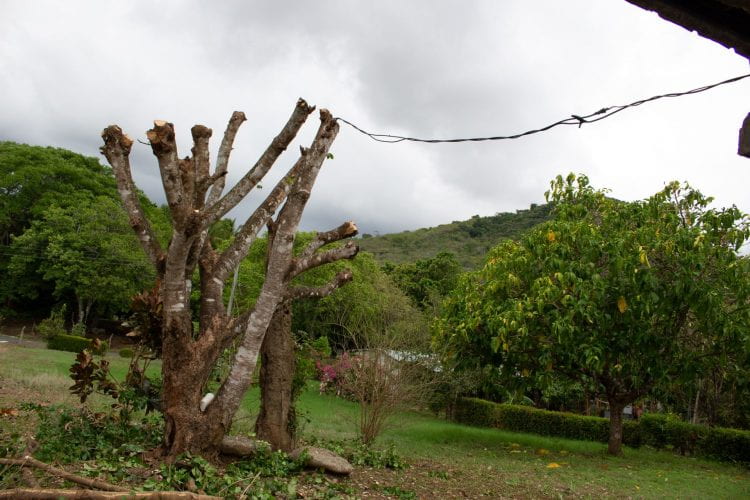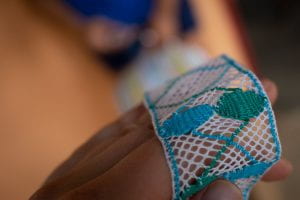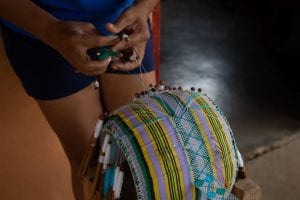Bajo Corral is a rural town stationed along the ecological corridor. First we met with the Peace Corps volunteer, Kiera, who is stationed there. Before we met with the landowners, we made  queques with Esther a campo resident. They are made with miel (honey) and coco (fresh coconut). They are a good source of fiber and make a great breakfast! Afterwards we ate lunch, a traditional campo soup of boiled beef, yucca, and rice. Next we met Augustina, a landowner in Bajo Corral.
queques with Esther a campo resident. They are made with miel (honey) and coco (fresh coconut). They are a good source of fiber and make a great breakfast! Afterwards we ate lunch, a traditional campo soup of boiled beef, yucca, and rice. Next we met Augustina, a landowner in Bajo Corral.
Augustina showed us her traditional dress, una pollera, that she makes. Each dress she makes is sewn by hand, as are the intricate designs that are sewn on to the dress. As it turns out, she is the head of an artisan group in Bajo Corral. Every other Wednesday the ladies meet to do their crafts together. Augustina showed us some of the artisanal plants that are used to make the traditional sombrero pintao that are worn by most campo men.
First we saw Junco, which is a native species that grows in wetter areas. The grass can be harvested, dried, and used to make the hats. Pita is a large plant that grows all over the Peninsula. It looks like a giant aloe plant. The fibers of the pita plant are extremely strong and durable and can be woven into a number of different things. I later read that the Ngobe indians, who occupy Bocas del Toro, use them to make a woven bag, called kra (Lincoln 2004). Perhaps we will contact the Ngobe to see if they could run a workshop on how to make the kra.

I brought samples of both Pita and Junco back to the Project, so I can experiment with growing them. I also brought back a few Calabazo that are used to make cups and bowls from the shells. We hope to find an artisan that utilizes Calabazo differently than the traditional way, so that the artisans can find new ways of making things.
Overall, Bajo Corral turned out to be a great resource for the Eco-Artisan project. We are planning a workshop for the artisans on Saturday. They will come down to Bajo Corral to learn about the planting and harvesting of Junco, Pita, and Calabazo. Ultimately, this will help the artisans be more sustainable and allow them to save money if they can use resources in their own backyard.



